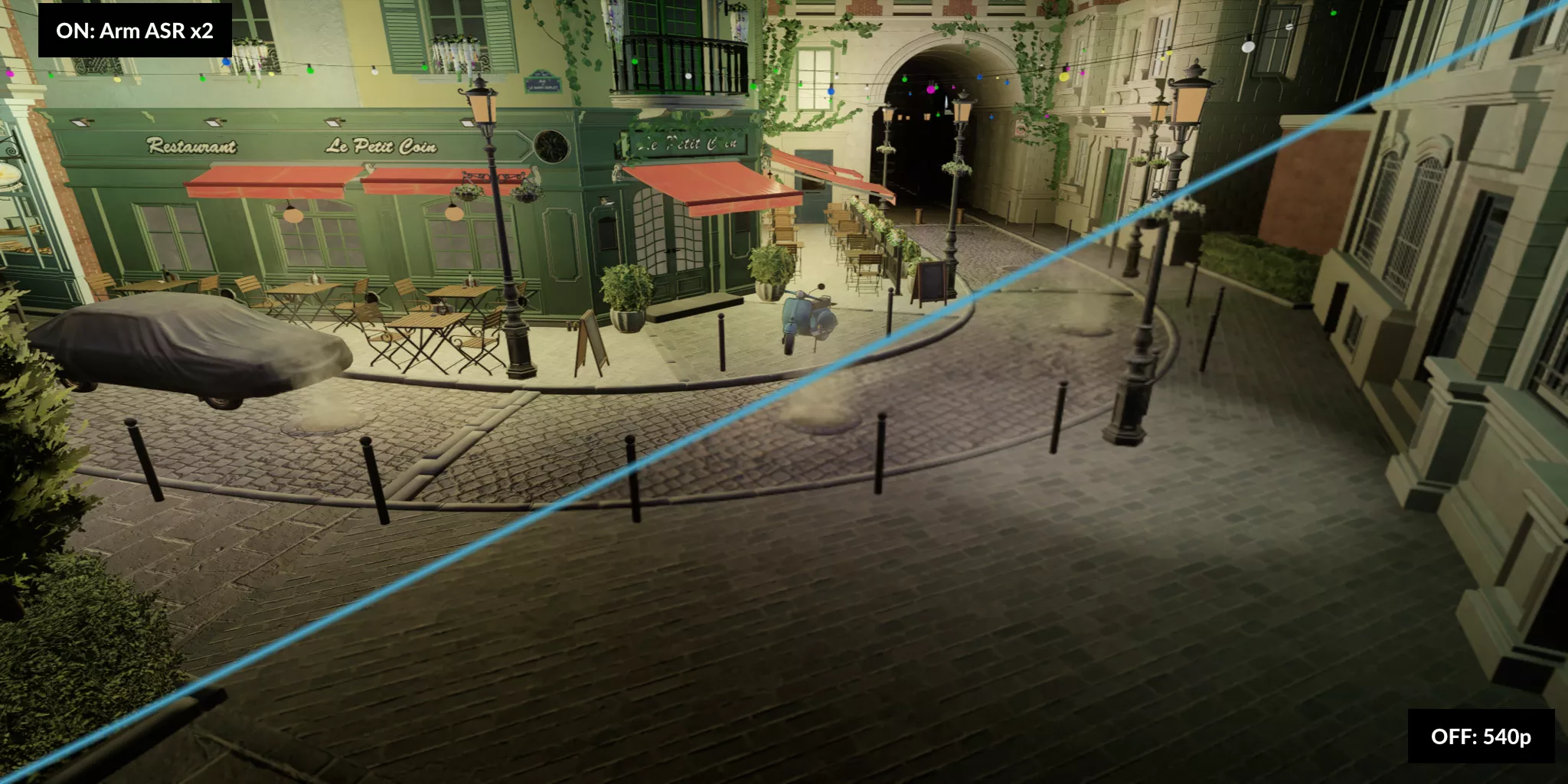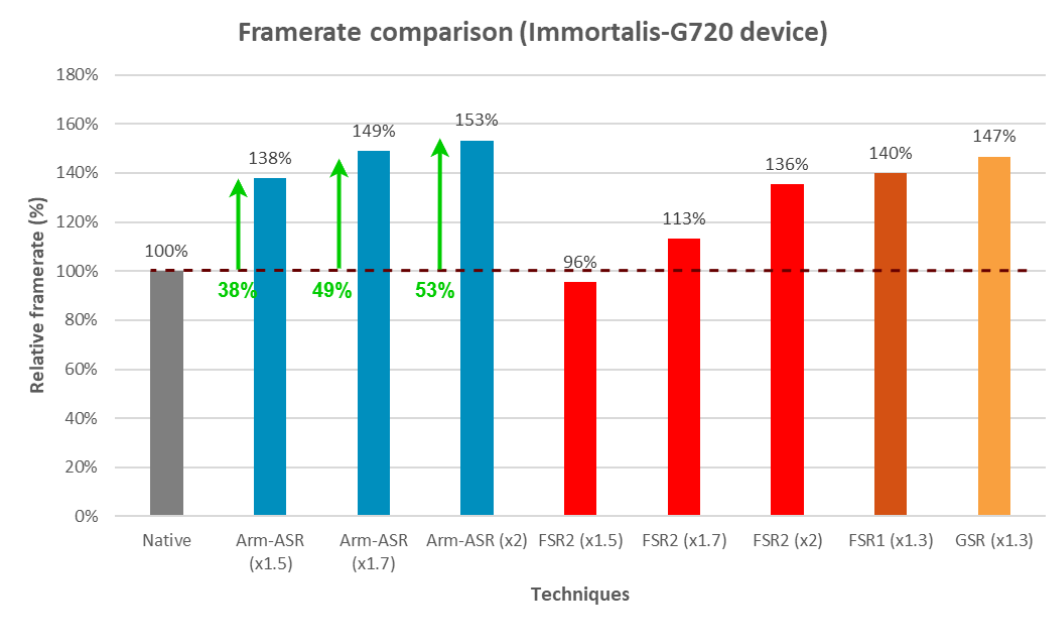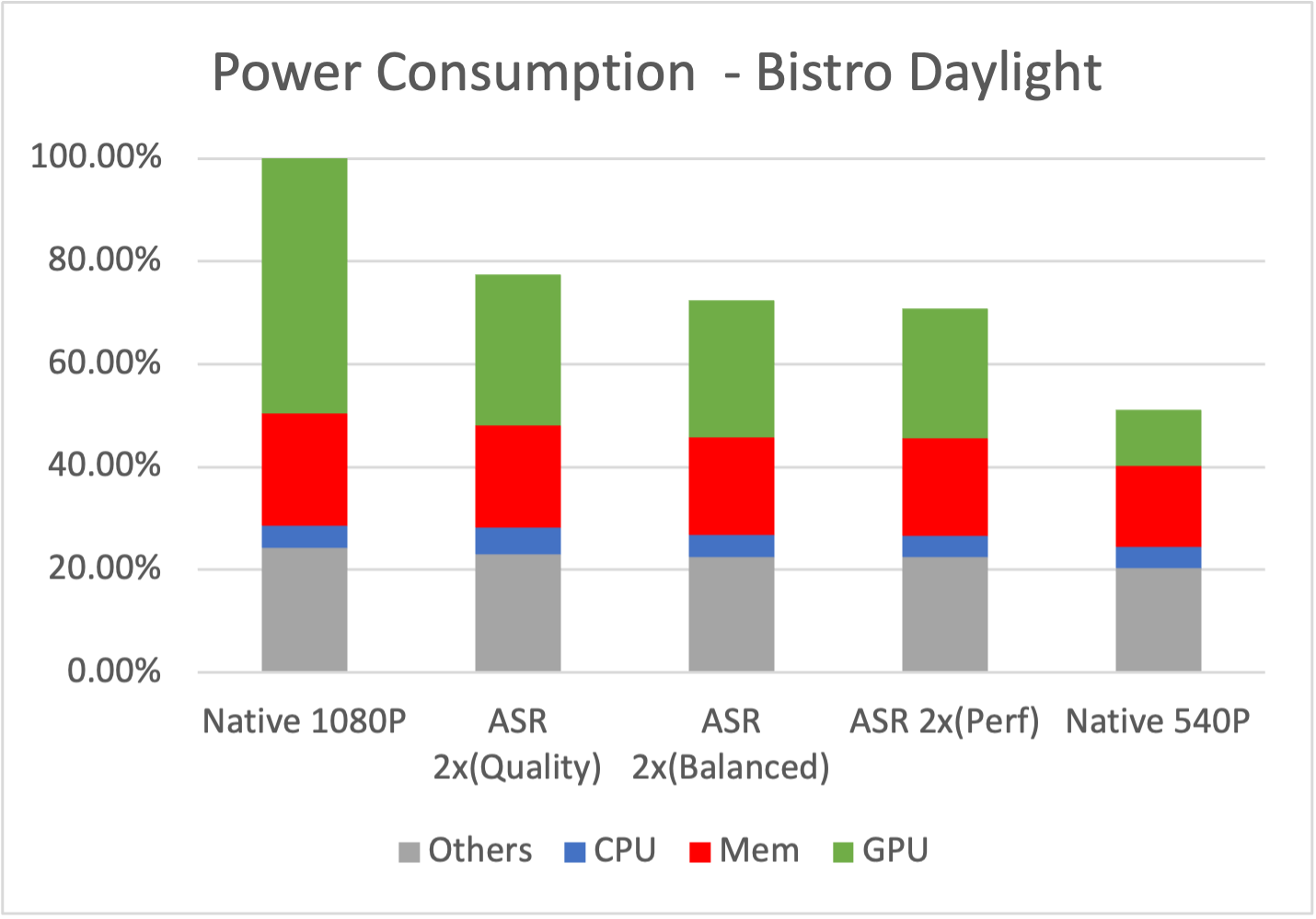In brief: Arm has introduced a new upscaling technology designed specifically for mobile devices. Arm Accuracy Super Resolution, or Arm ASR for short, is based on AMD's FidelityFX Super Resolution 2 (FSR 2) upscaler. It is a temporal upscaler, meaning it combines information from multiple frames to generate output.

Conversely, spatial upscalers work on a frame-by-frame basis and generally have lower requirements. A temporal approach can be more expensive from a computational standpoint but often provides higher quality results from lower resolution source material.
Early test results look promising. A commercially available device powered by an Arm Immortalis-G720 GPU (2,800 x 1,260 display resolution) running the Arm ASR upscaler outperformed all other techniques when rendering a modified version of the popular bistro scene . According to Arm, the relative framerate at 2x upscaling was 53 percent higher compared to the device's native performance.
Arm ASR also delivers significant power savings. On a MediaTek Dimensity 9300 handset, the upscaler (in performance mode) reduced power consumption by roughly 25 percent. That may not sound like a lot but on a mobile device where thermal throttling is a major concern and battery life is finite, savings like these will result in smoother overall experience with greater uptime. Reduced power consumption also means devices run cooler and will be more comfortable in the hand.
Arm's new upscaler has a lot going for it, and not just in terms of performance. Because it is based on FSR2, the API and configuration options should be familiar to developers that have already worked with AMD's solution.
Best yet, Arm is sharing the tech with the community under an MIT open-source license. Interested parties are invited to reach out to become early adopters. We can't wait to see what developers are able to do with it.
Arm is not the first to develop an upscaler for mobile devices. Qualcomm in April 2023 introduced Snapdragon Game Super Resolution (GSR), a single-pass, spatially aware upscaler that supports most GPUs but is optimized for its Adreno chips.
Arm shows off its own ASR upscaler tech optimized for mobile devices, based on AMD's FSR 2

